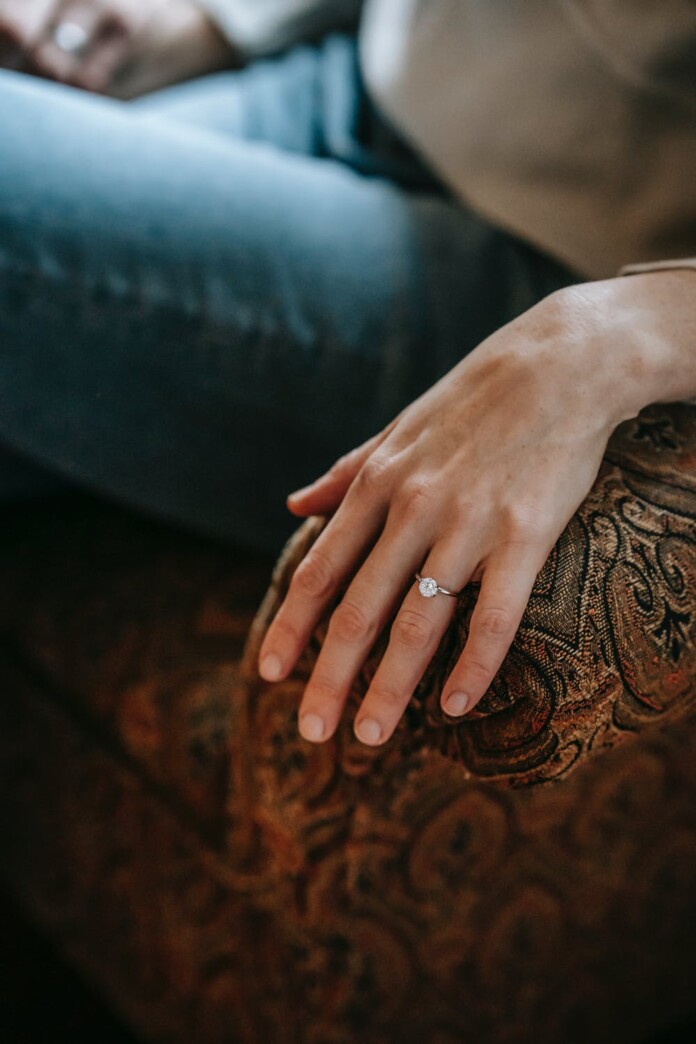You’ve finally decided to take the next major step in your relationship and pop the question – congratulations! Now that you’re on your way to an exciting new chapter with your love, it’s time to buckle down and find the perfect engagement ring.
If you’ve been paying attention over the past several months or years of your relationship, hopefully, you’ve noticed a few styles and trends that your partner is leaning toward. Whether they’re into the classic glamor of a cushion cut or the quirkiness and character of an antique ring, the perfect engagement ring can come in thousands of shapes and sizes. And with real diamonds and lab-grown diamonds as an option, the possibilities can feel endless.
An engagement ring is more than a pretty piece of jewelry and a symbol of commitment – it’s an opportunity to tell the story of your love and help your partner express their personal style and taste. There are a lot of small decisions that go into finding the ring of their dreams – here are just a few ideas to help guide your journey:
Know Your Partner’s Taste Beforehand
If you and your partner have been talking about getting married for a while, there’s a good chance they’ve already dropped a few hints about the type of ring they like. At the very least, it’s important to get an idea of the type of cut and gemstone they’d like best so you can plan your shopping around that.
Remember to give yourself plenty of time to shop before you pop the question since there’s no guarantee the first store you step into will have what you’re looking for. It’s also important to do your research on whether a lab-grown diamond or a real diamond will best meet your partner’s values and style.
Know Your 4 Cs
Whether you opt for lab-cut diamonds or real diamonds, one of the first things you’ll need to ask yourself before shopping is what your priorities are in regards to the 4 Cs of diamonds: clarity, cut, carat, and color.
Clarity refers to the number of inclusions and blemishes a diamond has, while cut helps define the quality of the diamond. Carat determines a diamond’s size, and color speaks for itself – however, it’s important to note that the less color a diamond has, the rarer it is.
When it comes to color, lab-grown diamonds might be your best bet if you’re looking for an unusual tint, like a blue, pink, or yellow diamond.
Another important thing to be able to distinguish is the difference between cut and shape. A lot of people confuse the two since it seems like cut should refer to the shape of the diamond. However, there’s a simple difference between the two: “cut” refers to the quality of the diamond and how well its facets capture and reflect light. “Shape” refers to the outline of the diamond itself. Popular diamond shapes include round, princess, cushion, and pear.
There’s More To a Ring Than The Diamond Itself
People put so much emphasis on the quality and appearance of the diamond on an engagement ring that it can be easy to forget how many other aspects there are to a ring. You’ll also need to consider the band, setting, side stones, and other small details you’re looking to add, such as a tiny engraving or hidden message on the inside of the band.
The choices you make on these smaller details will largely depend on your partner’s style and how flashy, versatile or unique you’d like the ring to be. An extra sparkly ring might include big side stones and tiny diamonds all along the band, while a unique ring may include a rose gold band or a tiny engraving on the inside of the band with the day you met or another personal message.
Decide Between Lab-Grown or Natural Diamonds
Before you start shopping, you may find it helpful to do your research into lab-grown vs. natural diamonds and decide what matters to you and your partner when it comes to ring shopping.
Lab-grown diamonds are typically more affordable than natural diamonds, but that’s not the only benefit – a lot of people opt for lab-grown because of the fact that it typically has lower environmental impact.
However, as with any other ethical decision, it’s important to do your due diligence before assuming all companies that sell lab-grown diamonds are doing ethical business. When done unethically, lab-grown diamonds can sometimes produce the same amount of fossil fuels as natural diamonds. Opt for a company like VRAI that creates their lab-grown diamonds sustainably in a zero-emission foundry.
Whether you go the lab-grown or natural route, be sure you ask for a certified grading report that validates the authenticity of the diamond. A company that won’t offer this isn’t one you should trust with such a precious purchase.
As with any other major investment, shopping for a ring requires due diligence and plenty of thought and care. Once you have an idea of what your partner will love, you’re well on your way to finding a ring that they won’t be able to keep their eyes off of.




